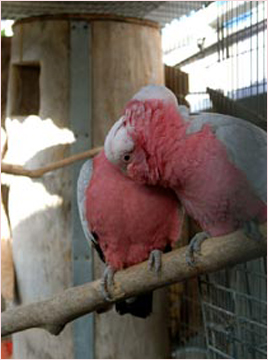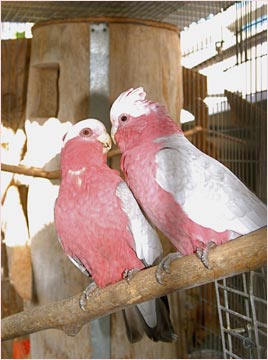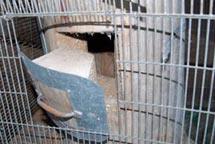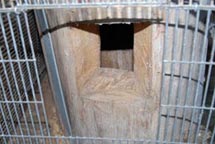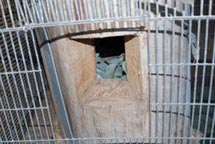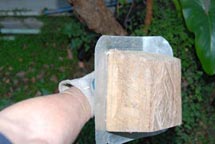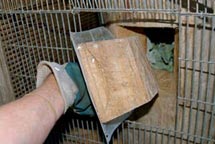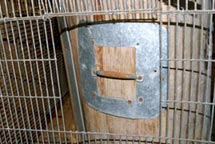|
By Susie Christian, Morro Bay, CA.
|
|||||||||||||||||||||||
|
|
|||||||||||||||||||||||
|
Waiting for eggs I also place a large rock or two in the middle of the flight. I find one bird will play in the sand, whilst the other stands on the rock, probably keeping watch. Every pair I have use their rock happily, even if it just to sun themselves. Most of the year my pairs of Galahs are very quiet, but during the first part of January they become louder. Eggs are usually laid in the morning hours between 8 and 11 AM, and there is always a racket that ensues on the egg-laying days. I haven’t figured if they holler before, during or after the egg is laid, but on a morning of noise from a particular pair, I can almost guarantee there will be an egg present if I look in the nest. Of course there are the eggs that get laid in the wrong places, and these misguided eggs always seem to happen – even with the best, most accurate pairs. The beauty of having a nice thick layer of sand on the flight floors, is that most of the time if an egg is accidentally dropped on the floor, it doesn’t break, or it might sustain a repairable hairline crack. I have several pairs who “miss” every so often, and for those pairs, I haul in extra Eucalyptus leaves to act as a cushion. A person can also lay a large, thick towel or blanket on the ground to cushion the part of the flight where the female is known to drop her eggs. And of course it helps as a birdkeeper to not have a job and be home all day long, to catch any shenanigans they might be up to.
|
|||||||||||||||||||||||
|
|
|||||||||||||||||||||||
|
|
|||||||||||||||||||||||

